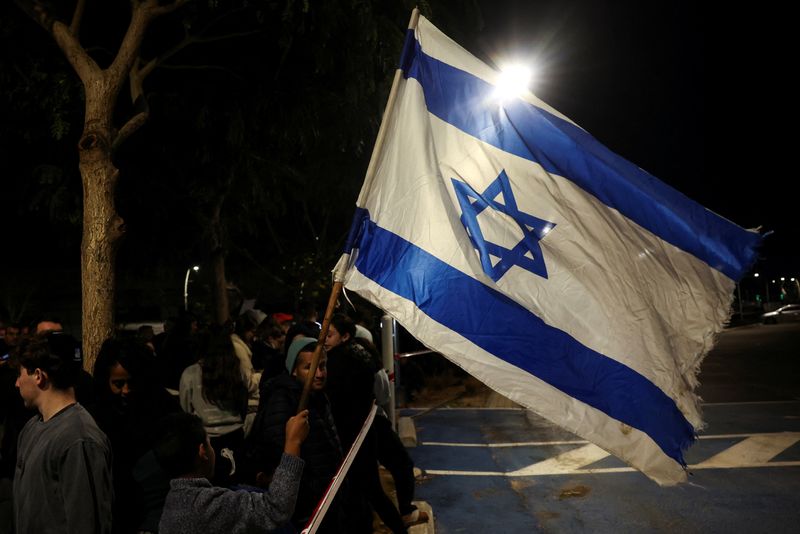From Avi (JO:) Ohio
SDEROT, Israel (Reuters) – Hundreds of Israelis gathered in Tel Aviv’s Hostage Square, some cheering, others crying, as a giant television screen showed the first glimpse of the first three hostages released under the Gaza ceasefire deal.
They watched as the three women – Romi Gonen, Doron Steinbrecher and Emily Damari – got out of a car in Gaza City and were handed over to Red Cross officials amid a crowd held back by Hamas gunmen.
The Israeli military released a video showing their families gathered at what appeared to be a military facility, screaming with emotion as they watched footage of the handover to Israeli forces in Gaza before being returned to Israel.
“Their return today represents a beacon of light in the darkness, a moment of hope and triumph for the human spirit,” said the Hostages and Missing Families Forum, a group representing some hostage families.
The release of the three women, the first of 33 hostages to be freed from Gaza under the first phase of the deal, comes in exchange for 90 Palestinian prisoners held in Israeli prisons.
The hostage-taking came in one of the most traumatic episodes in Israel’s history, when Hamas gunmen attacked a number of communities around the Gaza Strip in the early hours of October 7, 2023, killing about 1,200 civilians and soldiers and taking 251 hostages – men – kidnapped, women, children and the elderly.
But while many Israelis hope that the six-week ceasefire marks the beginning of the end of the war, there is deep concern about the uncertainty surrounding the remaining 94 hostages still being held in the Gaza Strip.
“I hope that the ceasefire will come about,” Tomer Mizrahi said in Sderot, a city in southern Israel within sight of the Gaza Strip that was attacked on October 7. “But from what I know of Hamas, you can’t even trust them.”
Images of Hamas police officers taking to the streets as the ceasefire took effect highlighted how far Israel is from its original war aims of destroying the Islamist group that has ruled Gaza since 2007.
“I’m torn,” said Dafna Sharabi from Beit Aryeh-Ofarim, a Jewish settlement in the occupied West Bank. “On the one hand there is a ceasefire to strengthen the armed forces to rest from all the madness, on the other hand it may not be the right time,” she said.
“They should have been eliminated and wiped out,” she said. “My son was on reserve duty there for a year, a whole year, and he sees all the residents of Gaza returning, seeing Hamas bring its forces back to all the places where he fought.”
MILITARY AGE MEN NOT OFFERED
After 15 months of war, Gaza is largely in ruins. According to the Palestinian Health Ministry, Israel’s campaign has killed nearly 47,000 Palestinians and displaced most of the two million people living in the enclave.
But for many in Israel, the war will not be over as long as Hamas still exists, and there have been a number of rallies against the ceasefire as a sellout that imprisons men of military age who are not part of the first group of 33 hostages.
National Security Minister Itamar Ben-Gvir has already resigned and his hardliner counterpart Bezalel Smotrich has also spoken out against the deal, saying he was reassured that it was not the end of the war.
The Israel Democracy Institute said its most recent Israeli Voice Index, conducted shortly before the deal was agreed, found that 57.5% of Israelis supported a comprehensive deal that would require the return of all hostages in return for ending the war provide. Another 12% supported a partial release of the hostages in return for a temporary ceasefire.

Amid this mix of emotions, for some, the feeling of exhaustion outweighed concern for the future.
“We’ve been waiting for this for a long time. We wanted it to be an absolute victory. I hope we achieve this absolute victory, if not now, then later,” said Shlomi Elkayam, who owns a business in Sderot. “There are pros and cons, but in the end we are fed up. We’re tired and we want everyone to be here at home.”





